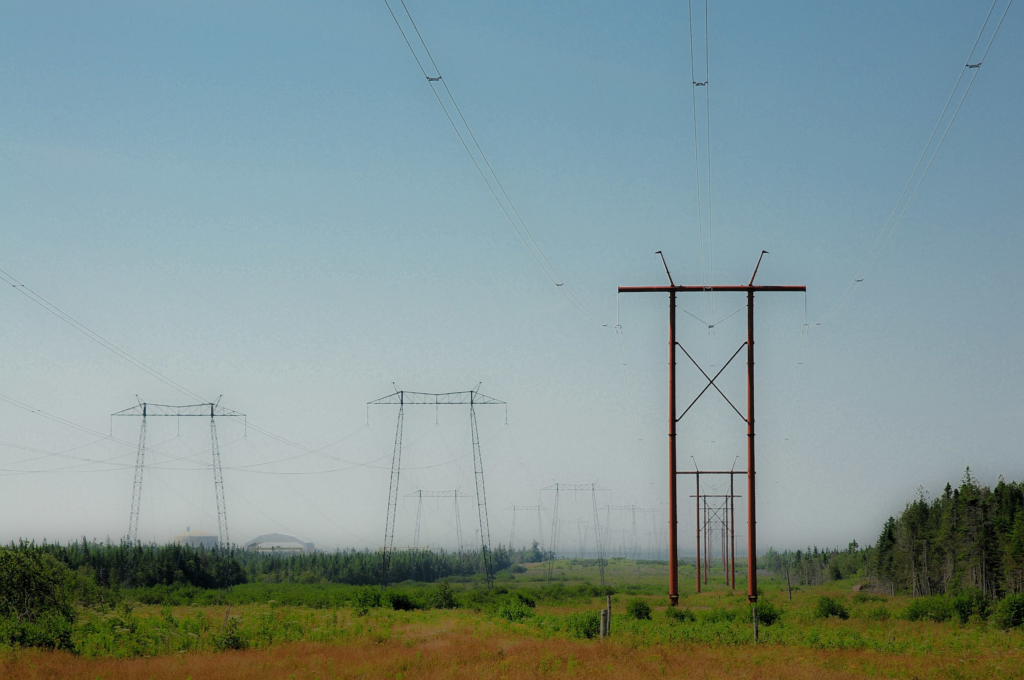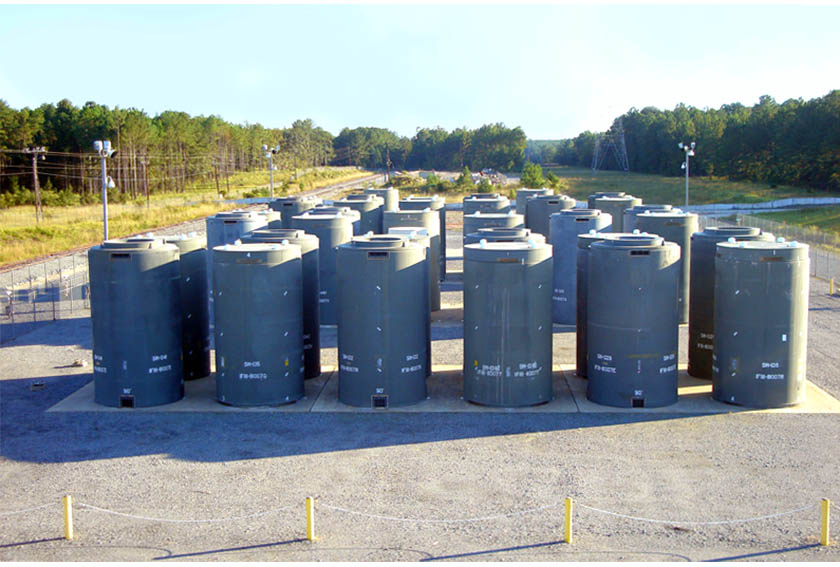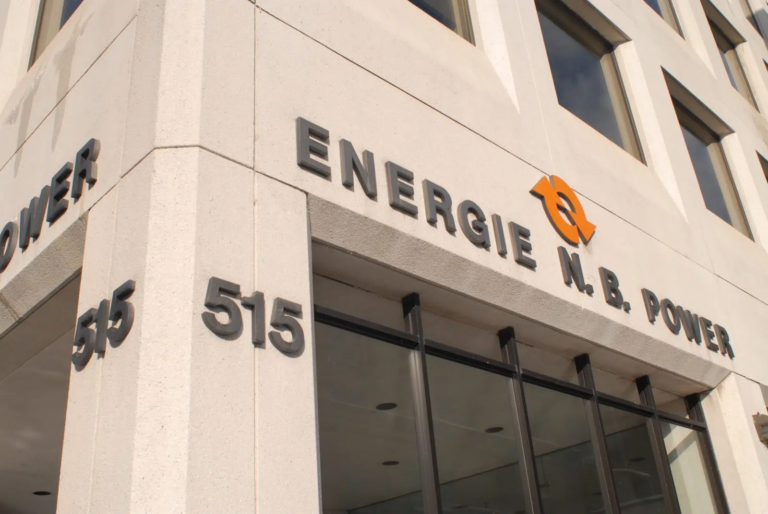By Thomas Lepper and Bradley Garlie
Though Canada may not be a nuclear power, our nation has certainly made its contributions to the cause — for better or for worse. Some may not know Canada is the second largest producer of uranium; even fewer may know we export nearly 85% of our uranium. I know I was surprised to hear that New Brunswick is the only other province besides Ontario home to a nuclear power plant (Point Lepreau Generating Station). And while we as Canadians may have a checkered past with nuclear energy, like providing uranium ore to the Manhattan Project or accidentally helping India become a nuclear power, I think nuclear energy deserves a fair hearing.

I have recently been seeing some anti-nuclear takes in local and national news. From its impact on Indigenous communities to powering AI data centres, nuclear energy has taken a few credibility hits in the court of public opinion. But before I launch into my defense of nuclear energy, what exactly is it and how is it produced?
The most basic explanation of nuclear power is that it is a complicated steam generator. Nuclear fuel is the most energy dense material we have found to date. To produce energy from this fuel, which is most often uranium-235, it is bombarded with neutrons, the neutron is absorbed but quickly breaks the atom into two fast moving parts, this process is called fission. These fast moving parts can then split other nearby U-235 atoms causing a chain reaction that creates a lot of heat. This heat is captured in water and turned into steam that then spins a turbine and thereby generates power.

However, uranium-235 cannot be split indefinitely and here lies the crux of the issue. After a nuclear fuel rod is considered spent, what is left is primarily uranium-238 (that is non-fissile), other fission products, and plutonium. What do we do with this nuclear waste that could remain radioactive for tens of thousands of years?
Contrary to the popular image of green glowing waste water in yellow drum barrels, the short answer is that we store it — either underground or in dedicated sites until it no longer presents a risk. While dangerous in its raw state, when nuclear waste is contained and stored properly it is not actively dangerous.
So how is nuclear waste stored?
At the Point Lepreau Nuclear Generating Station, about 30 minutes from Saint John, they use both wet and dry storage to contain plutonium. Wet storage contains the plutonium after it is extracted and is placed in a tank of water for 6 – 10 years. Power plants in Canada, like Lepreau, have additional portable pumps and generators to ensure a similar accident as what occurred on March 11, 2011 in Fukushima, Japan does not happen in Canada.


Once the plutonium is deemed safe to move it is then placed in dry storage. Dry storage containers are constructed of a thick layer of reinforced concrete enveloped in a layer of carbon steel. Then, to protect against oxidation, it is then filled with inert helium. Each nuclear power plant site in Canada has enough space to store all the used nuclear fuel produced during the operating life of the station.
However, would you be surprised to hear that over 90% of nuclear waste is recyclable? Yes, through a process called reprocessing, the byproducts of spent nuclear fuel can be remade into mixed oxide (MOX) fuel that can then be reused in the fission process. In fact, France, one of the largest producers of nuclear energy, produces about 10% of its energy using MOX fuel. So, why don’t others repurpose their nuclear waste?
Plutonium is the primary contention many nations have with nuclear energy. It can be quite readily repurposed and made into nuclear weapons, and has been. On May 18 1974, India used plutonium from the Canadian provided CANDU nuclear reactors to perform its first atomic weapons test. Since then, the United States and Canada have put a moratorium on reprocessing spent nuclear fuels. This is one of the many reasons you see Iran mentioned in the news. But is this fear well founded? And do the benefits of reprocessing outweigh the downsides?
In terms of nuclear proliferation, the Iranians have been attempting for years to expand their nuclear energy program. This program has often been sabotaged by the U.S. and Israel over concerns the Iranians will use the spent nuclear fuel to create weapons in a scenario not unlike India’s. However, we should consider the benefits of reprocessing.
Recently NB Media Co-op ran an op-ed by William Eric Altvater titled “First Nations chiefs shouldn’t be duped by ‘nuclear-is-green’ deception.” William made several claims in his commentary; however, his primary point of contention was the dumping of spent nuclear fuel on Indigenous land. This is one claim we can agree on; spent nuclear fuel is technically being stored on Indigenous land (Canada) and is, for all intents and purposes, ‘forever dangerous.’
While we largely agree with several of the points William made, we cannot in good conscience agree with his conclusion: i.e., that nuclear energy is not green. Let’s take his arguments against nuclear power point-by-point.
Nuclear Energy is Green
I would broadly agree that humanity’s long march toward ‘progress’ is often tied to overconsumption. In the West and the global north, we consume resources at an unsustainable rate compared to the rest of the world. If we wish to leave a habitable planet for future generations, this pattern of consumption cannot continue. However, to dismiss the one technology that holds the potential to delay a global extinction event is shortsighted.
The argument that nuclear only benefits us in the here and now belies the point that we are able to reuse and reduce the spent nuclear fuel we have used. Future generations can use this fuel and should use this fuel. The recent spate articles published by NB Media Co-op depicting Indigenous resistance against nuclear energy was spurred by the 10-minute SSHRC funded “Askomiw Ksanaqak (Forever Dangerous): Indigenous Nations Resist Nuclear Colonialism.” Indigenous anxieties over nuclear waste are not unfounded if that waste is not properly utilized. But rather than push the government away from nuclear energy, we should be pushing them to reuse the waste in sustainable ways that minimize the environmental damage storing nuclear waste can have.
William also made the argument that the water near nuclear reactors is warmed by the fission process and has effects on the local fish and wildlife: it is a well documented fact. But, such a localized event pales in comparison to the planetary level holocaust wrought upon wildlife by fossil fuels. In fact, a better place to direct resistance would be toward the Irving Oil Refinery in Saint John that regularly emits around 3 million tons of CO2 per year. Better yet, ire should be directed at the Irving Forestry and Forestry products division responsible for clear cutting on Crown lands.

However, I would push back against the claim that nuclear energy is not green energy. Nuclear energy has saved approximately 1.8 million lives since 1970. In fact, even accounting for the Chernobyl and Fukushima disasters, nuclear energy comes in last only behind solar energy in death rates per unit of electricity produced (Measured in terawatt hours). Compared to fossil fuels that pump their toxins into the atmosphere, nuclear waste is at least stored and heavily regulated in most every nation. Nuclear energy is also far less harmful to the environment in terms of climate change than fossil fuels. Since 1970, nuclear energy has prevented over 64-gigatonnes of CO2-equivalent greenhouse gas emissions being released into the atmosphere. Nuclear energy, while not perfect, is the only scalable and proven way of dampening the effects of climate change and preventing a catastrophic man-made global warming event.
Anxieties over nuclear energy are misplaced. Not only is it the safest form of energy, but the most efficient. The only reason we do not see it used more often is because of the fear mongering and constant media trials against it. Take Germany for example. After the 1986 Chernobyl disaster the anti-nuclear sentiment took hold of the nation. Some of the fallout had contaminated German land and the German Green Party garnered massive popularity after it ran on an anti-nuclear platform. Fifty years later we can see the effects of that misguided platform; Germany relies heavily on coal power plans and operates one of the largest open-pit coal mines in the world, the Hambach Surface mine. Not only that but up until Russia invaded Ukraine, Germany also relied quite heavily on Russian natural gas, another pollutant.
So let us not be like Germany and give into fear. Nuclear energy is green and far less harmful than other forms of energy production we have at our disposal. We should be lobbying our government to reuse spent nuclear fuel rods, not store them indefinitely on Indigenous land. We should direct our anger towards fossil fuel producers who are largely responsible for the bulk of CO2 emissions that are slowly making our planet uninhabitable. And overall, we should reflect on our own consumption — it is not sustainable.




